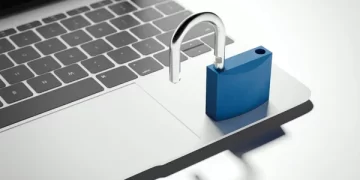How To Transfer Domain Name: A Simple Guide
Choosing the proper domain name is one of the first stages in creating a fantastic website. Popular domain names tend to sell rapidly. So, once you've decided on one, conduct a domain name search to ensure it's not already in use, or pay the asking amount if the owner is seeking to sell.But what if you want to switch domain registrars? This is where a domain transfer comes in. We'll go through everything in this post.
 The process of moving your domain name from one registrar to another is known as a domain transfer. Because ICANN enforces a 60-day Change of Registrant freeze, you must have been with your current registrar for at least 60 days to be eligible for a domain transfer. You could wish to start a domain transfer for a variety of reasons. Perhaps your existing registrant has abruptly raised their costs, or your website is taking longer to load. Perhaps you found a better bargain elsewhere and would like to combine many names under a single DNS registrar.
The process of moving your domain name from one registrar to another is known as a domain transfer. Because ICANN enforces a 60-day Change of Registrant freeze, you must have been with your current registrar for at least 60 days to be eligible for a domain transfer. You could wish to start a domain transfer for a variety of reasons. Perhaps your existing registrant has abruptly raised their costs, or your website is taking longer to load. Perhaps you found a better bargain elsewhere and would like to combine many names under a single DNS registrar.
Here’s a step-by-step tutorial for transferring a domain.
 According to ICANN guidelines, if you created or transferred your domain name within the previous 60 days, it is ineligible for transfer. Before making the transfer, do the maths to guarantee you’re not wasting your time.
According to ICANN guidelines, if you created or transferred your domain name within the previous 60 days, it is ineligible for transfer. Before making the transfer, do the maths to guarantee you’re not wasting your time.
 Your contact information must be up to date since both the registrar you’re leaving and your new DNS registry provider will need to contact you throughout the transfer process. Check your account data by logging into your current registrar’s control panel. Check your name, phone number, and physical address to ensure they are all right. If any information is missing, the transfer may take longer or be refused.
Your contact information must be up to date since both the registrar you’re leaving and your new DNS registry provider will need to contact you throughout the transfer process. Check your account data by logging into your current registrar’s control panel. Check your name, phone number, and physical address to ensure they are all right. If any information is missing, the transfer may take longer or be refused.
 Your domain registrar may offer email service along with your domain name. This allows you to send emails to and from addresses such as you@yoursite.com, which can help your business expand.
Your domain registrar may offer email service along with your domain name. This allows you to send emails to and from addresses such as you@yoursite.com, which can help your business expand.
These email addresses are often terminated when you migrate to another registrar, potentially leaving you out of the loop. Before beginning the transfer procedure, make sure you have a backup email account ready to go so that you can receive essential notifications.
By the way, using GauravGo, you can quickly generate and optimize your company’s email correspondence in order to expand and delight your consumer base.
 In your registrar’s control panel, look for the “unlock domain” option. Each provider is different, but you should be able to locate it under the “Domain” or “Security” area of the main account page.
In your registrar’s control panel, look for the “unlock domain” option. Each provider is different, but you should be able to locate it under the “Domain” or “Security” area of the main account page.
Domains are automatically locked to prevent unauthorised modifications or deletion. Depending on your existing provider, you may be able to unlock your domain with a simple click, or you may need to contact your registrar directly to request manual unlocking.
You can transfer your domain name to another registrar once it has been unlocked.
 An authorization code (also known as an Auth-Code, Auth-Info Code, or AuthInfo Code) is required to transfer your domain. This code prevents an unauthorised entity from transferring your domain.
An authorization code (also known as an Auth-Code, Auth-Info Code, or AuthInfo Code) is required to transfer your domain. This code prevents an unauthorised entity from transferring your domain.
Furthermore, this code acts as a link between your previous registrar and your new provider, and it must be provided within five days of your request, generally by email. Some registrars allow code creation straight from their control panels.
 Next, go to your new registrar and create an account. Locate its transfer service page and input the domain name you’re transferring. The “www” is optional; simply provide the name of your domain and its suffix (e.g.,.com,.org,.info, etc.).
Next, go to your new registrar and create an account. Locate its transfer service page and input the domain name you’re transferring. The “www” is optional; simply provide the name of your domain and its suffix (e.g.,.com,.org,.info, etc.).
Enter the authorisation code that your previous registrant gave. Check that you typed the code precisely as it was supplied. If the code does not match, the transfer will fail and you will have to restart.
 Both your previous registrar and your new provider will contact you when you input the permission code. You will be prompted to confirm your contact information as well as formally approve the transfer. Check that the contact information you’ve given both registrars is valid, and be prepared to answer inquiries about why you’re leaving your existing provider.
Both your previous registrar and your new provider will contact you when you input the permission code. You will be prompted to confirm your contact information as well as formally approve the transfer. Check that the contact information you’ve given both registrars is valid, and be prepared to answer inquiries about why you’re leaving your existing provider.
 You must now pay for your domain name transfer. Your new provider may need you to pay for a year of service, but free first-year promos are frequent.
You must now pay for your domain name transfer. Your new provider may need you to pay for a year of service, but free first-year promos are frequent.
 When your original supplier releases the domain, your new registrar will require time to configure your domain and servers. This process usually takes a few days to a week. Your website will still be available via your former registrar during this transition.
When your original supplier releases the domain, your new registrar will require time to configure your domain and servers. This process usually takes a few days to a week. Your website will still be available via your former registrar during this transition.
 Some service providers allow you to hide your website’s public WHOIS information. When your website is searched, it will return contact information for your registrar rather than your personal information.
Some service providers allow you to hide your website’s public WHOIS information. When your website is searched, it will return contact information for your registrar rather than your personal information.
This is handy if you run a home-based business or don’t want your phone number visible. Private domains, on the other hand, are more costly than public domains.
 Deactivate your old registrar service only when your new account has been activated and your domain has been properly moved. After you’ve checked that everything works, cancel your previous service so you’re not charged again.
Deactivate your old registrar service only when your new account has been activated and your domain has been properly moved. After you’ve checked that everything works, cancel your previous service so you’re not charged again.
 As you might have guessed from reading this essay, executing a domain transfer isn’t rocket science – you simply need to follow the processes and ensure you’re supplying the necessary information along the way. It should make no impact to your visitors if done correctly.
As you might have guessed from reading this essay, executing a domain transfer isn’t rocket science – you simply need to follow the processes and ensure you’re supplying the necessary information along the way. It should make no impact to your visitors if done correctly.
Begin using GauravGo.
Learn more about using GauravGo to set up a custom domain email account. GauravGo also offers other services in addition to high-quality security. Keep informed and safe till then.







 The subject line is a brief message that appears before the
The subject line is a brief message that appears before the  If you are aware of the recipient’s name, you should include it. If not, a sir/madame will suffice. If you’re having trouble adhering to a gender-neutral approach, prefix women’s names with a Ms. Most crucial, regardless of the gender of the receiver, include a comma at the conclusion of the greetings line. Dear Ms ABC, for example, or Dear Mr XYZ.
If you are aware of the recipient’s name, you should include it. If not, a sir/madame will suffice. If you’re having trouble adhering to a gender-neutral approach, prefix women’s names with a Ms. Most crucial, regardless of the gender of the receiver, include a comma at the conclusion of the greetings line. Dear Ms ABC, for example, or Dear Mr XYZ. In most cases, the concluding line is where you may make a call to action or notify the reader of the following actions. Consider alternatives to compel them to reply to you. Instead, craft your phrase such that people are inspired or encouraged to take action. Finding methods to extend the discussion, whether by email or in person, is a great practise. For example, we might discuss this on-call tomorrow afternoon. or I’d appreciate it if you could keep me updated on this.
In most cases, the concluding line is where you may make a call to action or notify the reader of the following actions. Consider alternatives to compel them to reply to you. Instead, craft your phrase such that people are inspired or encouraged to take action. Finding methods to extend the discussion, whether by email or in person, is a great practise. For example, we might discuss this on-call tomorrow afternoon. or I’d appreciate it if you could keep me updated on this. The signature, as the final element of your email, provides a feeling of neutral authority and professionalism. It often includes your current professional identity, such as your name, job title, business name, phone number, and maybe an other email address for you. Make sure to start your signature with Sincerely or Best Regards.
The signature, as the final element of your email, provides a feeling of neutral authority and professionalism. It often includes your current professional identity, such as your name, job title, business name, phone number, and maybe an other email address for you. Make sure to start your signature with Sincerely or Best Regards. Check your email’s tone of voice again. Establish a neutral tone that allows the reader to concentrate and develop the response you anticipate. An email that is devoid of spelling and grammatical problems is simpler for others to read and understand, which increases your chances of receiving a response. Aside from spelling and punctuation, it is critical that your email has a good readability, which means that the reader can comprehend what you are saying.
Check your email’s tone of voice again. Establish a neutral tone that allows the reader to concentrate and develop the response you anticipate. An email that is devoid of spelling and grammatical problems is simpler for others to read and understand, which increases your chances of receiving a response. Aside from spelling and punctuation, it is critical that your email has a good readability, which means that the reader can comprehend what you are saying.
 Spam is a relatively new concern, yet it has a long history. Gary Thuerk, an employee of the now-defunct Digital Equipment Corp. (DEC), sent out the first spam email in 1978 to advertise a new product. The unwanted email was sent to around 400 of the 2,600 persons who used email on the Advanced Research Projects Agency Network. According to some sources, it resulted in around $12 million in new sales for DEC.
Spam is a relatively new concern, yet it has a long history. Gary Thuerk, an employee of the now-defunct Digital Equipment Corp. (DEC), sent out the first spam email in 1978 to advertise a new product. The unwanted email was sent to around 400 of the 2,600 persons who used email on the Advanced Research Projects Agency Network. According to some sources, it resulted in around $12 million in new sales for DEC. Spammers deliver spam using a variety of methods, including the following:
Spammers deliver spam using a variety of methods, including the following: